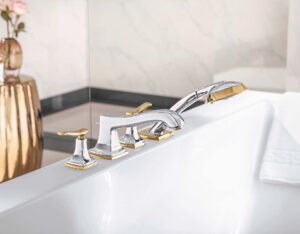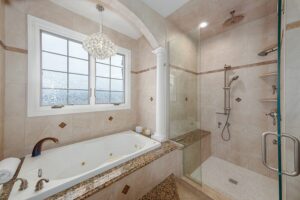If you’re in the business of thermostatic shower mixers, whether you’re a procurement officer, a construction project manager, or a bathroom fixture distributor, you’ve landed in the right spot. I’m here to break down the compliance and safety standards you need to know to keep your products top-notch and your customers happy. Let’s dive in and make sure we’ve got all the bases covered.
Thermostatic shower mixers must comply with various international standards to ensure safety and efficiency. In the United States, OSHA and ANSI guidelines mandate specific flow rates and temperature controls for safety showers. In Europe, AS3498 and other local standards dictate temperature settings to prevent scalding. Compliance ensures that mixers maintain consistent temperatures and provide anti-scald protection, promoting user safety. Manufacturers integrate these features to meet regulatory requirements and enhance product reliability.
Understanding these standards is crucial, not just for compliance but for the peace of mind it gives you and your customers. Let’s break it down,
What are the OSHA requirements for safety showers?
Alright, let’s kick things off with OSHA. These folks mean business when it comes to safety showers. They require a minimum flow rate of 20 gallons per minute for at least 15 minutes. That’s a heck of a lot of water, but it’s essential to flush out any nasties in an emergency. Make sure your showers meet these standards, so you’re ready for anything that comes your way in an industrial setting. Consistency in flow rates is key here, folks! Not meeting these standards can result in severe penalties and, more importantly, compromise the safety of users. By adhering to these guidelines, you ensure that your safety showers are always up to par, providing the necessary protection in critical situations. This is particularly important in workplaces where hazardous chemicals are present, and immediate and effective decontamination is a must.
What are the ANSI guidelines for safety showers?
Next up, we’ve got ANSI. Their guidelines specify that emergency showers must flow at a minimum rate of 20 US gallons (76 liters) per minute for 15 minutes. This gives enough time to wash off any chemical residues and contaminated clothing. Sticking to these guidelines isn’t just about ticking boxes; it’s about keeping workplaces safe and employees protected from hazardous substances. So, let’s keep those showers gushing! Compliance with ANSI standards ensures that your safety showers are capable of providing a thorough and effective rinse, crucial for minimizing harm in emergency situations. Additionally, these guidelines help standardize safety measures across different facilities, making it easier for inspectors to evaluate compliance and for employees to understand what to expect in terms of safety protocols.
What is the standard for TMV?
Now, onto TMVs. AS3498 is the go-to standard here. It mandates that hot water for personal hygiene should be delivered at a max of 50°C to prevent burns. This isn’t just a number; it’s a lifesaver, preventing scalding accidents in homes and businesses. Make sure your TMVs are up to scratch, keeping everyone comfy and safe. Installing TMVs that meet this standard is critical, especially in environments where vulnerable populations, such as children and the elderly, are present. By ensuring that the water temperature never exceeds safe levels, you significantly reduce the risk of accidental burns. Moreover, adhering to this standard demonstrates your commitment to user safety and product quality, which can enhance your reputation in the market and increase customer trust.
Are mixing valves required by code?
You bet they are! Section P2802.2 of the code requires thermostatic mixing valves to limit water temperature in plumbing systems. This isn’t just about playing by the rules; it’s about protecting your users from sudden temperature changes that could lead to scalding. Install those valves at the source (think water heater) to ensure compliance and keep everyone safe. Following these codes is essential not only for legal compliance but also for ensuring the overall safety and satisfaction of your customers. Proper installation of mixing valves helps maintain a consistent water temperature, preventing dangerous fluctuations that could result in injuries. By adhering to these regulations, you contribute to safer residential and commercial environments, enhancing the value and reliability of your products.
Compliance Standards in Major Export Countries
Each major export country, like the U.S., Germany, the UK, Australia, Canada, Italy, Japan, and South Korea, has its own set of standards. Knowing these is crucial for getting your products into these markets and keeping them there. Compliance builds trust and ensures that your mixers are welcomed with open arms across the globe. For instance, in the U.S., compliance with NSF/ANSI standards is often required, while in Europe, adherence to CE marking requirements is essential. Understanding these diverse standards helps you navigate the complexities of international trade, ensuring that your products meet the necessary certifications and regulations in each target market. This not only facilitates smoother market entry but also boosts your brand’s credibility and competitiveness on a global scale.
Industrial Chains and Their Role in Compliance
Let’s talk industrial chains. Countries like China, Germany, Italy, the U.S., Japan, and South Korea are powerhouses when it comes to producing thermostatic shower mixers. They follow strict quality control and regulatory frameworks, ensuring that the products coming off their lines are top-notch. Working with these industrial giants means you’re getting products that meet the highest standards of safety and reliability. These industrial chains leverage advanced manufacturing technologies and rigorous testing protocols to ensure that every unit meets or exceeds regulatory requirements. By partnering with suppliers from these regions, you can benefit from their expertise and stringent quality assurance practices, ultimately delivering superior products to your customers. This collaboration also allows for continuous improvement and innovation, keeping your offerings competitive in a rapidly evolving market.
Common Safety Features in Thermostatic Shower Mixers
Safety first, folks! Thermostatic shower mixers come packed with features like precision temperature control, anti-scald protection, and automatic shut-off. These aren’t just fancy terms; they’re essential for ensuring consistent water temperatures and preventing accidents. Highlight these features in your products to meet regulatory standards and wow your customers. Precision temperature control ensures that users enjoy a comfortable and safe showering experience, while anti-scald protection prevents sudden spikes in water temperature. Automatic shut-off mechanisms add an extra layer of safety by stopping the water flow in case of a malfunction. By emphasizing these safety features in your marketing and product descriptions, you can attract more safety-conscious consumers and stand out in a crowded market. Plus, these features not only enhance user safety but also demonstrate your commitment to quality and innovation.
Installation and Maintenance of Thermostatic Mixing Valves
Installation and maintenance might not sound glamorous, but they’re vital. Proper installation ensures your thermostatic mixing valves perform optimally, while regular maintenance keeps them in tip-top shape. Follow the guidelines to ensure longevity and efficiency, and you’ll keep those safety features working perfectly, ensuring compliance and customer satisfaction. Regular maintenance includes checking for leaks, ensuring proper calibration, and replacing worn-out parts. By conducting routine inspections and servicing, you can prevent potential issues before they become major problems, extending the lifespan of your products. Proper installation and maintenance also help in maintaining consistent performance, reducing the risk of sudden temperature changes that could compromise user safety. Investing in high-quality installation and regular maintenance services ensures that your products remain reliable and compliant with safety standards over time.
Compliance with safety standards isn’t just a checkbox exercise; it’s essential for ensuring the safety and satisfaction of your customers. By sticking to international guidelines and incorporating robust safety features, you can deliver high-quality products that stand out in the global market. Stay on top of regulatory changes, prioritize safety, and you’ll not only build trust but also cement your place as a market leader.




